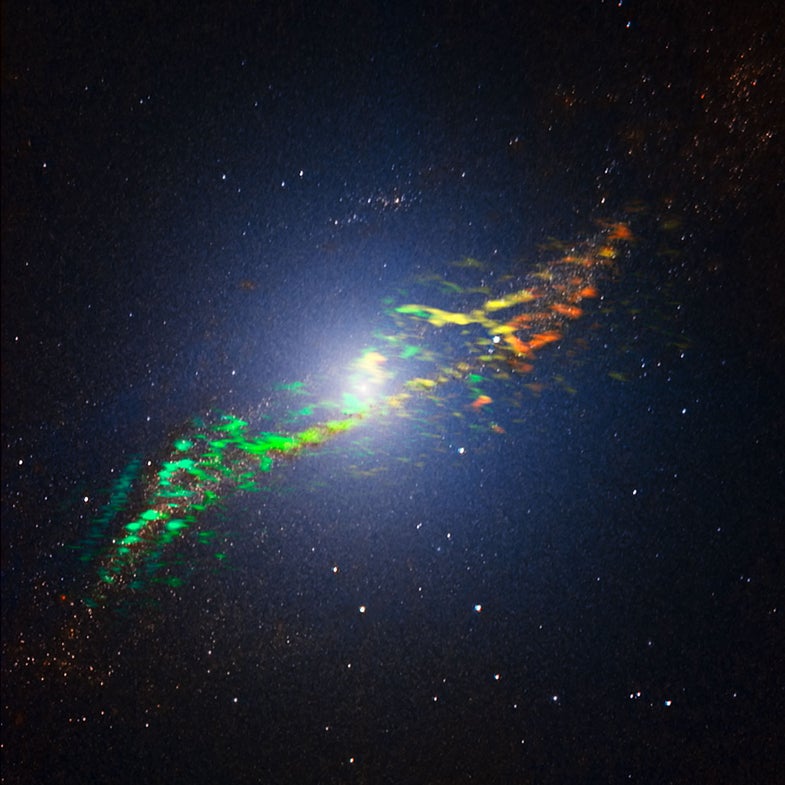ALMA Telescope Peeks Through Centaurus A’s Swirling Gas Clouds
Along with hosting a supermassive black hole at its heart, the center of the radio-loud galaxy Centaurus A is home...

Along with hosting a supermassive black hole at its heart, the center of the radio-loud galaxy Centaurus A is home to a stellar nursery that tells a tale of the galaxy’s past. The presence of a dark band of dust, as well as the galaxy’s powerful emissions in the radio end of the spectrum, suggest it formed in a collision between a giant elliptical galaxy and a smaller spiral galaxy.
But that dark dust band blocks out the galaxy’s bright center, and to see past it, astronomers have to look in longer wavelengths of light. Today’s pretty space pic reveals the position and motion of the gas clouds at Centaurus A’s center, the sharpest and most sensitive images ever made. The colors are the result of the Doppler effect as the gas clouds swirl around.
ALMA can detect signatures with a wavelength around 1.3 millimeters, which corresponds to carbon monoxide. As the gas moves around, it causes changes to this wavelength as seen from here. Greener features correspond to gas coming toward us, while orange areas represent gas moving away. So the gas is obviously swirling around the galactic center in this image.
This image is a combination of ALMA observations and near-infrared observations from the European Southern Observatory’s New Technology Telescope. The Atacama Large Millimeter/sub-millimeter Array is set to be completed last year, but already observations with a partial array are yielding beautiful and bountiful results.